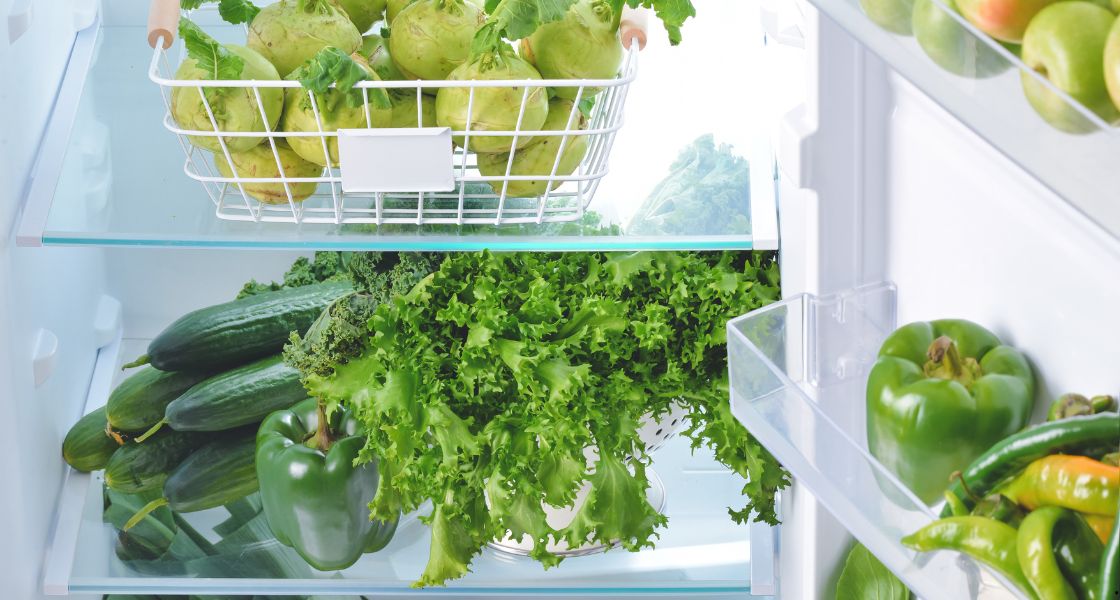
Proper storage of fresh vegetables is essential to maintain their quality, flavor, and nutritional value. Whether you run a restaurant or simply want to keep your home kitchen stocked with fresh produce, understanding the best practices for storing vegetables can make a significant difference. This guide will help you learn how to store vegetables effectively and keep them fresh longer.
Best Practices for Refrigerating Different Types of Vegetables
Refrigeration is one of the most common methods for storing fresh vegetables. However, not all vegetables thrive under the same conditions. Here’s how to store various types of vegetables to maximize their freshness:
- Leafy Greens like lettuce and spinach: store these in the crisper drawer of your refrigerator in a perforated plastic bag. The holes in the bag allow for proper air circulation, which helps maintain the right humidity level.
- Root Vegetables like carrots, beets and radishes: Remove the green tops (which can draw moisture away from the roots) and store the roots in a plastic bag in the crisper drawer. They prefer cool, moist conditions.
- Cruciferous Vegetables, for example broccoli and cauliflower: Store these in a perforated plastic bag in the refrigerator. They need a cool and moist environment to stay fresh.
- Tomatoes: Store at room temperature until they ripen. Once ripe, they can be refrigerated to extend their shelf life, but it’s best to let them come to room temperature before using to enhance their flavor.
- Peppers: Store in a plastic bag in the refrigerator. They need a slightly less humid environment than leafy greens.
Understanding these fresh vegetables storing practices can help you keep your produce in optimal condition.
The Role of Humidity in Vegetable Storage
Humidity plays a crucial role in how long vegetables are fresh. Vegetables generally fall into two categories: those that prefer high humidity and those that prefer low humidity.
- Vegetables like leafy greens, cucumbers, and peppers prefer high humidity environments. The crisper drawer in your refrigerator is designed to maintain higher humidity levels, which helps prevent wilting and dehydration.
- Vegetables such as onions, garlic, and squash prefer lower humidity. Storing these in a cool, dry place (such as a pantry) rather than the refrigerator can help prevent mold and rot.
Adjusting the humidity settings in your refrigerator’s crisper drawers can provide the optimal environment for different types of vegetables.
Signs Your Vegetables Are Past Their Prime and Safety Tips
Recognizing when your vegetables are past their prime is essential for both quality and safety. Here are some common signs that vegetables are no longer fresh:
- Leafy Greens: signs of spoilage are wilted, yellowing leaves and slimy texture. You should discard any greens that have a slimy texture or an off smell.
- Root Vegetables when spoiled can have soft spots, mold growth or off smell. If only a small part is affected, you can cut it off and use the rest, but if the vegetable is mushy or has an off smell, it’s best to discard it.
- Cruciferous Vegetables when spoiled turn yellow or brown, get mushy texture and unpleasant odor. Remove any discoloured or mushy parts and use the rest if the majority is still fresh.
- Tomatoes and peppers can have wrinkled skin, mold or soft spots. If mold is present, discard the entire vegetable as mold can spread internally.
Being vigilant about these signs helps ensure that you are consuming fresh and safe produce.
Storage Solutions for Extending Vegetable Freshness in Your Business
For businesses, especially those in the food industry, keeping vegetables fresh is crucial to maintaining quality and minimizing waste. Here are some storage solutions tailored for business needs:
- Cold Storage Units: invest in commercial-grade refrigeration units that offer precise temperature and humidity controls. This can significantly extend the freshness of your vegetables.
- Vacuum Sealing: vacuum sealing can remove air and seal in freshness, which is particularly useful for leafy greens and other perishable vegetables. This method can help extend the shelf life by several days.
- Regular Inventory Checks: implement a routine schedule for checking inventory. Rotate stock to use older vegetables first and ensure that any spoiling produce is removed promptly to prevent it from affecting other items.
- Proper Containers: use containers that are designed for vegetable storage. These often have adjustable vents to control humidity and keep vegetables fresh for longer periods.
- Staff Training: ensure that your staff is trained in proper storage techniques and understands the importance of maintaining the right conditions for different types of vegetables.
By implementing these solutions, businesses can maintain the quality of their produce, reduce waste, and ensure customer satisfaction with fresh, high-quality vegetables.
In conclusion, knowing how to store vegetables properly can make a significant difference in their longevity and quality. By following best practices for refrigeration, understanding the role of humidity, recognizing signs of spoilage, and implementing effective storage solutions, you can keep your fresh vegetables in prime condition for longer periods. Whether for home use or in a business setting, these strategies will help you enjoy the full flavor and nutritional benefits of your vegetables.


